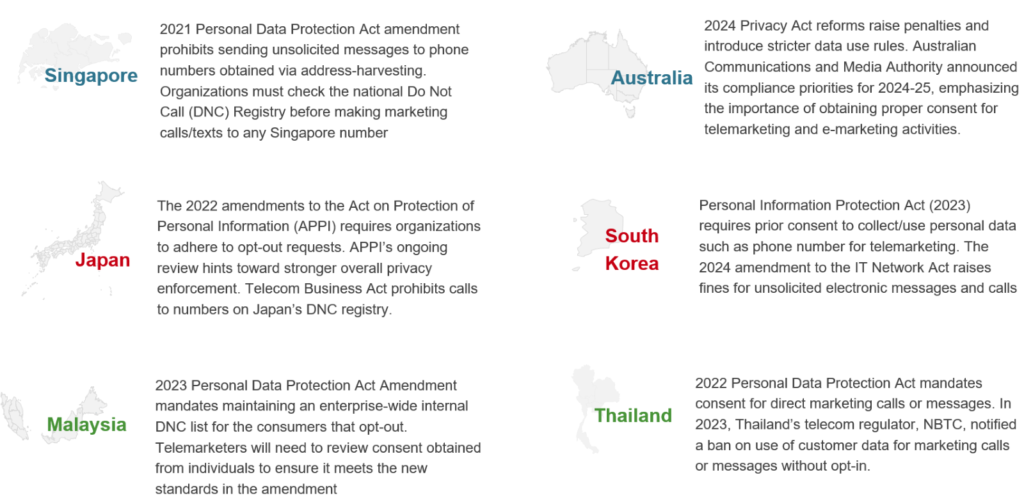
If you receive a message or an unexpected outreach, whether it is a call, a text, an email, or a direct message on social media, the chances are you will hesitate to engage. And if it is a generic telemarketing pitch for a credit card or insurance plan, your first instinct may be to ignore it or block the sender altogether.
A global survey conducted by YouGov across 18 countries found that 68% of consumers “rarely or never” answer calls from unknown numbers, with 26% saying they never answer and 42% saying not often. Even in traditionally phone-centric markets such as India, a significant share of consumers are now avoiding unsolicited calls.
In Indonesia, for instance, 57 percent of respondents reported that they do not often answer calls from unfamiliar numbers. For many consumers across Asia-Pacific (APAC), a region marked by its cultural, linguistic, and digital diversity, telemarketing has come to represent impersonal and disruptive communication.
Telemarketing is often seen as intrusive, but when done with consent, personalization, and timing, it can foster real-time, human conversations that build trust and not just drive conversions but enhance them.
Despite growing skepticism, it remains a key sales channel across APAC, supporting lead generation, upselling, and retention. The region’s diverse consumer landscape offers strong potential for personalized outreach at scale. Still, the channel is at a crossroads, its effectiveness persists in some segments, but its reputation and dominance are clearly in decline, as our analysts have explained in the below blog.
Reach out to discuss this topic in depth.
Why traditional telemarketing is not sufficient, and what should organizations do about it?
Telemarketing’s challenges are not universal, they are most acute for organizations that haven’t adapted to the way customers engage today. Across APAC, a combination of technological advancements, shifting consumer behaviors, and tightening regulations are reshaping the landscape. Companies relying on outdated approaches are struggling to keep up. To remain competitive, enterprises must now evolve their telemarketing strategies in line with modern market dynamics.
Fragmented outreach through telemarketing falls short; orchestration and timing take center stage
Many organizations still approach telemarketing as a collection of disconnected, channel-specific tasks. One team handles calls, another sends emails, and digital ads run independently resulting in fragmented outreach. Although telemarketing spans multiple touchpoints, including voice calls, Short Message Service (SMS), email, and even door-to-door visits, these efforts often operate in silos with minimal coordination or shared context.
Today, technology enables a more integrated approach. Channels can now be unified into a single, orchestrated journey, where interactions such as an email open, a website visit, or a chatbot conversation inform the timing and content of the next call or message. In this model, telemarketing is no longer a standalone function. Instead, it becomes an embedded part of the customer journey, aligned with digital behaviors and enhancing the relevance, continuity, and the impact of engagement.
- Implications for enterprise strategy
Embrace channel orchestration and data-driven timing. Use behavioral triggers such as email opens, website interactions, or social media engagement to streamline timely, context aware follow-ups across touchpoints.
Impersonal telemarketing scripts cause fatigue; personalization is now table stakes
Consumers have become desensitized to robocalls, templated pitches, and generic pitches. These impersonal approaches make them feel like just another number, prompting quick disengagement. A recent Everest Group study found that 40% of respondents in the APAC region cited impersonal and generic communication as a key concern when adopting Generative AI (gen AI) for customer interactions.
Today, AI and Customer Relationship Management (CRM) integration allows businesses to transform how they engage. Sales teams can access real-time insights into who the prospect is, what they’re interested in, and where they are in the buying journey, turning conversations into consultative, value-driven interactions rather than one-size-fits-all pitches.
- Implications for enterprise strategy
To meet evolving customer expectations, enterprises must invest in personalization engines and intent-driven data strategies. AI-powered tools such as recommendation engines and predictive analytics can deliver personalized offers, dynamic content, and tailored experiences at scale.
Intelligent automation can adapt interactions in real time, based on individual preferences, while Customer Data Platforms (CDPs) consolidate insights from multiple channels to build 360-degree customer profiles. These profiles enable highly targeted outreach and sales campaigns. Just as important, teams must be empowered with these insights to personalize conversations on the fly, guided by empathy and relevance, not rigid scripts. Scripts should serve as conversation frameworks, not constraints!
Regulatory heat for telemarketing is rising; compliance is a differentiator
APAC governments are tightening regulations on unsolicited outreach. Singapore’s Personal Data Protection Act, Australia’s Privacy Act reforms, and Japan’s consent laws are just a few examples. Ignoring them puts businesses at a strong non-compliance risk.

Leading companies are turning compliance into a trust-building asset. They are prioritizing opt-in models, using tools to scrub contact lists in real time, and educating teams on regional laws.
- Implications for enterprise strategy
To build lasting trust and remain compliant in an increasingly regulated environment, enterprises must embed consent-first practices into their sales culture. This means going beyond basic legal adherence and creating an ethical, customer-centric telemarketing framework. The following practices can help organizations operationalize this approach effectively:
- Secure explicit and informed consent before initiating any telemarketing outreach, ensuring customers understand what they are opting into
- Clearly identify yourself and communicate the purpose of the call at the outset to build transparency and trust
- Honor customer preferences by respecting opt-out requests and avoiding calls at inconvenient times or frequencies
- Protect personal data in line with applicable privacy regulations, ensuring robust data handling and security protocols are in place
- Provide a straightforward and accessible way for customers to opt out of future communications, and ensure those preferences are enforced across all channels
- Train agents regularly on ethical selling practices and monitor calls consistently to uphold quality and compliance standards
Treat telemarketing as a part of your Customer Experience (CX). By integrating telemarketing into the broader CX strategy, businesses can move beyond short-term sales goals and build lasting relationships. When aligned with trust, engagement, and retention, telemarketing becomes not just a channel for outreach, but a meaningful touchpoint in the customer journey.
What is next for telemarketing: A future built on human+AI collaboration
Looking ahead, telemarketing is set to evolve, not as the cold-call factory of the past, but as a precision-driven, trust-first channel that seamlessly integrates into the broader customer engagement ecosystem.
The future lies in a Human+AI model, where agents are empowered with AI tools to prepare, personalize, and follow up more effectively. AI will go beyond operational support to play a strategic role in shaping outreach. On the horizon is agentic AI, intelligent systems capable of autonomous engagement that learn from interactions and adapt in real time.
These AI agents could initiate conversations based on user behavior, address objections dynamically, and know exactly when to escalate to a human. Early innovations like Zoom’s AI Companion and Salesforce’s Agentforce are already laying the foundation for this new generation of voice-enabled, end-to-end autonomous agents.
If you found this blog interesting, check out our The Top 10 Predictions That Will Revolutionize CXM In 2025 | Blog – Everest Group, which delves deeper into another topic regarding CXM.
If you have any questions or would like to discuss these topics in more detail, feel free to contact Simran Agrawal ([email protected]) or Divya Baweja ([email protected]).











